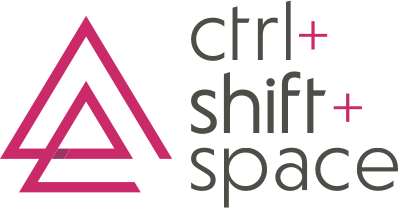This article originally appeared in the Portland Business Journal (Mar 21, 2019) and was written by Sean Meyers.
Allyson Strowbridge is owner and principal of ctrl+shift+space, a Portland workplace. design firm.
COURTESY OF ALLYSON STROWBRIDGE
Allyson Strowbridge is principal of ctrl+shift+space, a two-person, Portland-based workplace strategy and design firm with a client list that includes Zapproved and Technology Association of Oregon.
How important is office design in attracting and retaining workers?
McKinsey & Co. predicts that by 2020, there will be a 16- to 18-million shortage of highly skilled, talented workers. Imagine the business that ignores its workplace and the needs of the employees who use it. Then picture the company that invests in its environment and supports the work styles of its team. Considerations such as company culture and values are important too, but hands down, everything being equal, the company that invests in the work environment shows that it values employees and will attract better candidates
How does a business go about deciding how much to invest in office design?
Research from the Society for Human Resource Management indicates the cost to recruit and hire a new employee with a $60,000 annual salary averages $30,000 to $45,000. Retaining just one employee through intentional workplace planning and design means saving stacks of cash.
What’s new in office design?
An important movement is the ‘WELL-Building’ standard. While LEED certification, rather a given these days, is about sustainable building methods that increase operational and environmental efficiencies, the next step is ensuring the well-being of the human occupants. People need spaces where they can enjoy the quiet and unplug. We’re also hungering for places to connect with others and share positive, memorable experiences. Paying attention to air quality, access to natural light, clean water and a connection to nature are critical. Eventually, WELL-Building will also be a given.
What can a company do in the short-term to be more ‘human-centric’?
Improve lighting and add living plants wherever possible. Throw in some accent paint or wall graphics to further tie into the brand, plus art work, area rugs and throw pillows help to add a more residential feel.
What’s the top priority for your own office design?
An exciting challenge for me and many others is designing workplaces for the ‘ultimate experience.’ What is the future going to hold? We know there will be an increasing number of highly skilled workers who will expect integrated and seamless technology to be everywhere. AI will reduce the more menial tasks, in turn giving people more time to live, create and innovate. Accordingly, future designs must allow for comfort, freedom of choice and movement.
What are common misconceptions that business owners have about office design?
Over-simplification of the effort and details involved in workplace interior projects, plus under-estimation of the time and budget required. Due diligence really must be done up front to fully understand the work styles and needs of employees. Some companies choose not to go through that part of the process and miss the mark because of it.
What’s the modern office design equivalent of the mullet haircut? What makes you cringe?
The startup that looks like everything was bought third-hand and nothing matches – the ‘Frat House’ look. And dangling cords – install some Velcro straps already!


